Tintern Abbey in the Wye Valley
Cistercian monastery ruins and scenic countryside in south Wales
The ruins of Tintern Abbey lie between the Wye River and the A466 road at the southern end of Tintern village in south Wales. The ruins are impressive to walk through and the Wye Valley setting is beautiful.
Tintern Abbey was founded in 1131 AD by Walter de Clare, Lord of Chepstow, who granted land to Cistercian monks. It became the first Cistercian house in Wales. The Abbey started its life as a series of wooden buildings. By the mid twelfth century, there was a stone church and cloisters. The Abbey was rebuilt between 1270 and 1301. By the end of the rebuilding, about 400 monks lived at the Abbey. The Black Death, the disastrous disease which spread through Europe 1346 to 1353, badly affected life at the monastery, but Tintern Abbey continued to operate until 1536.
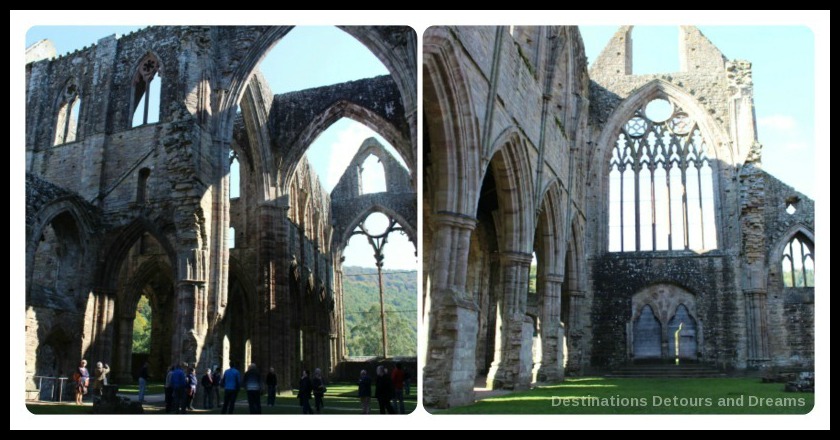
Except for its lack of a roof, window glass, and internal divisions,
it stands much as it did in the 14th century.
In the 1500s, political actions of King Henry VIII ended monastery life in England and Wales. The Dissolution of the Monasteries was part of his policy to take over the churches, both to sever ties with Rome and to obtain their considerable wealth. Tintern Abbey was surrendered to the King in 1536. Within a few years, lead was stripped from the roof of Tintern Abbey and the building began to decay. The Abbey became a source of building stone.
In the late 18th century when it became fashionable to visit wilder parts of the country and the Wye Valley became renowned for its picturesque qualities, Tintern Abbey was rediscovered and the site cleaned up. The famous painter J M W Turner was a visitor. Poet William Wordsworth wrote Lines Composed a Few Miles Above Tintern Abbey, on Revisiting the Banks of the Wye During a Tour, July 13, 1798 here.
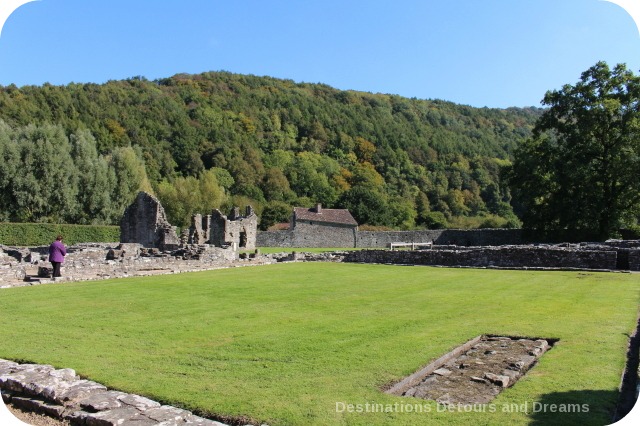
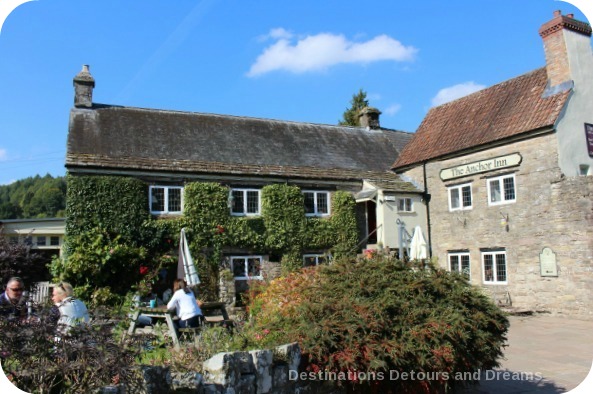
Next to the Abbey, within its original grounds, is the Anchor Inn pub and restaurant. The main building used to be the Abbey’s cider mill and horse-drawn apple press. Adjoined to this building, the Ferryman’s cottage once housed a boat and its custodian who transported people and goods across the river to England.
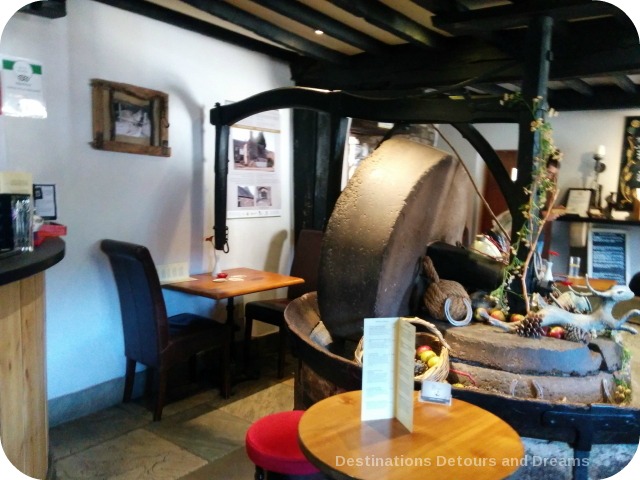
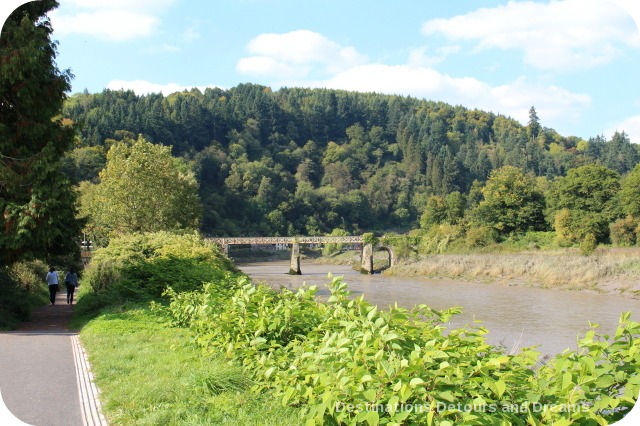
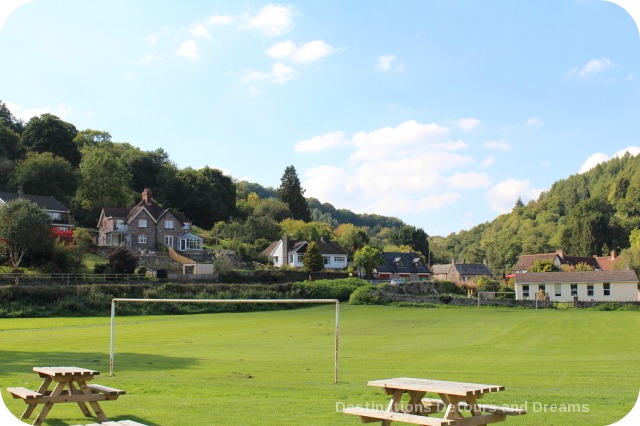
Tintern is toward the southern end of the Wye Valley. The Wye River (Afon Gwy in Welsh) is the fifth-longest river in the United Kingdom. For much of its 134 miles, it forms the border between Wales and England. Its source is in the Welsh mountains at Plynlimon. It meets the Severn Estuary just below Chepstow.
A 72-mile stretch of the lower Wye Valley, from just south of Hereford to Chepstow, is designated as an Area of Outstanding Beauty, which means it is an area designated for preservation due to its significant landscape value. The area contains a number of attractions and activities for visitors. Our trip through the Valley was short and only took us from Chepstow to Monmouth (16 miles), but the scenery lived up to expectations.
If you enjoyed this post, sign up for Destinations Detours and Dreams monthly e-newsletter. Get behind the scenes information and sneak peeks ahead in addition to a recap of the month’s posts.
PIN IT
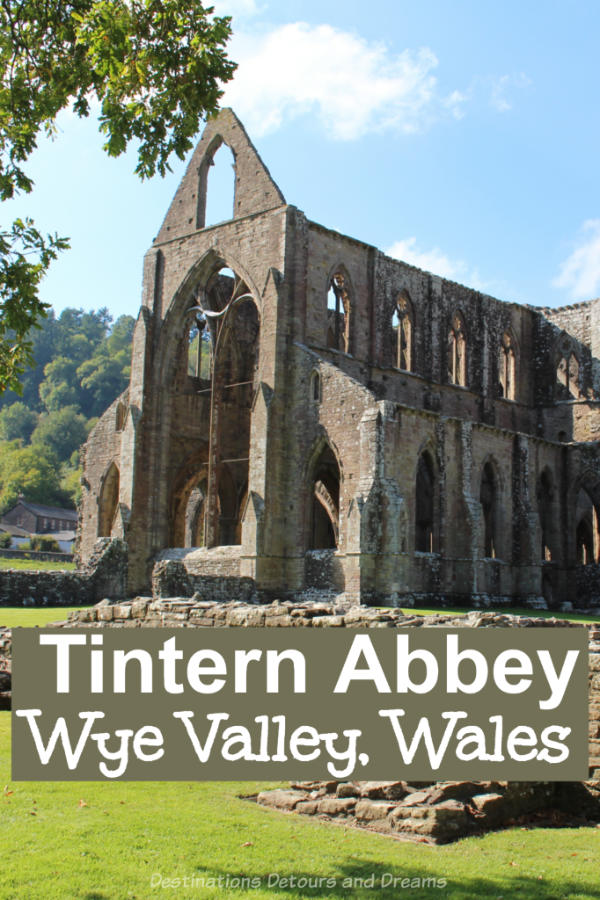

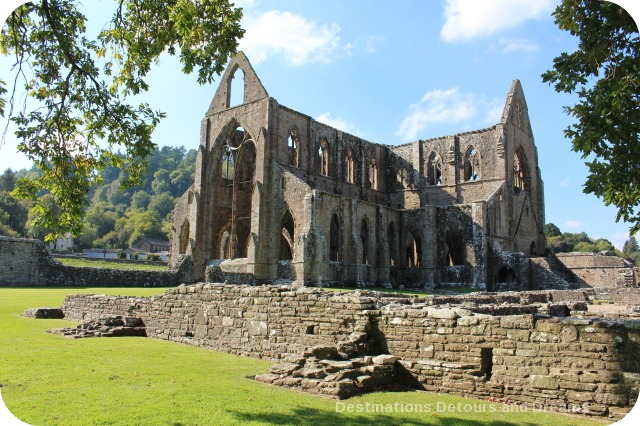
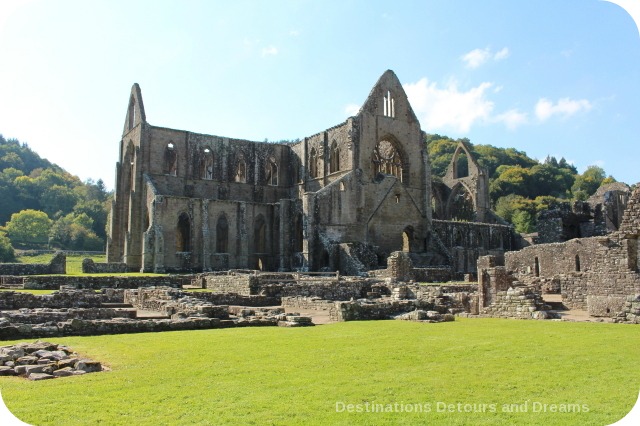
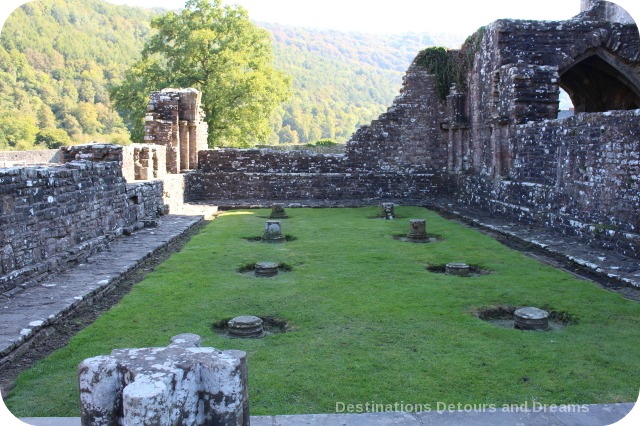
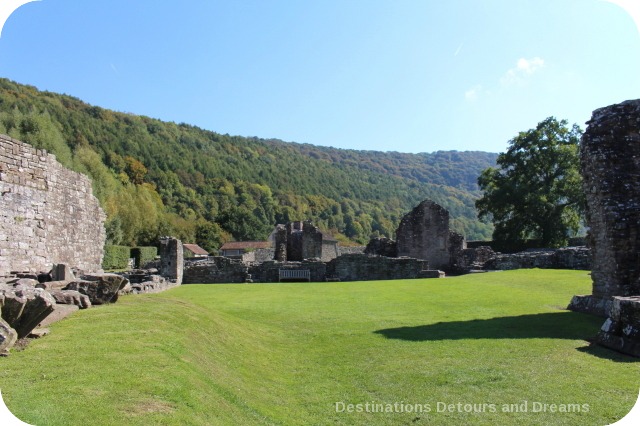
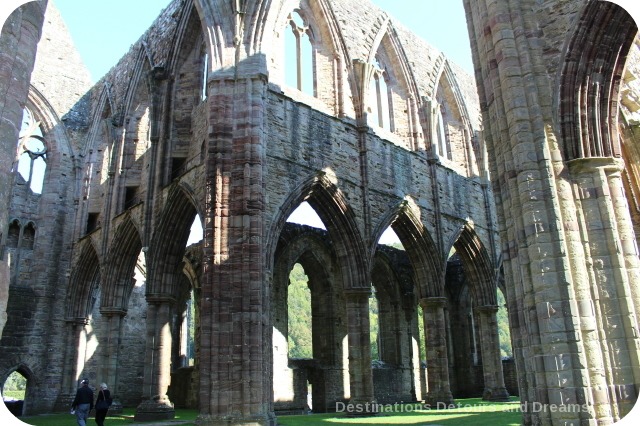
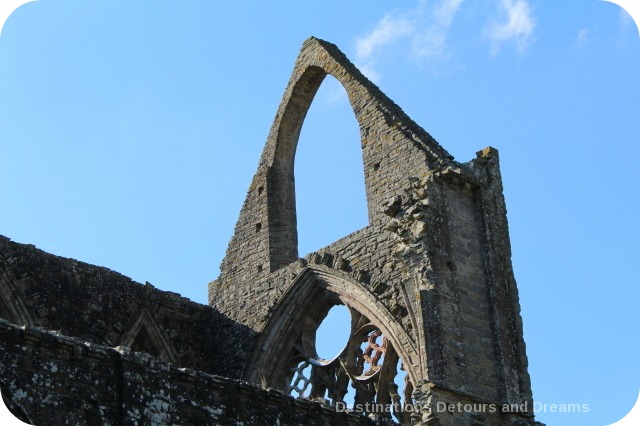
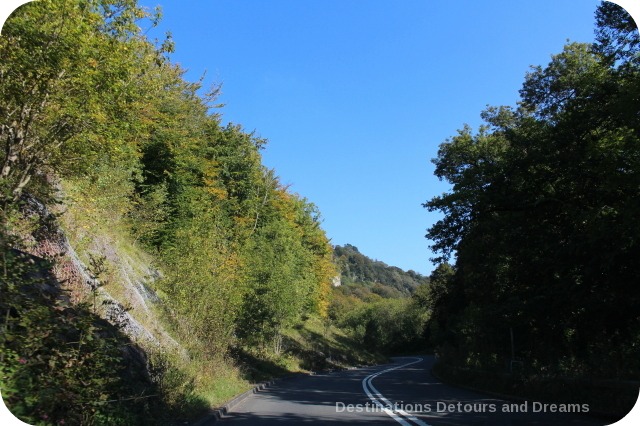
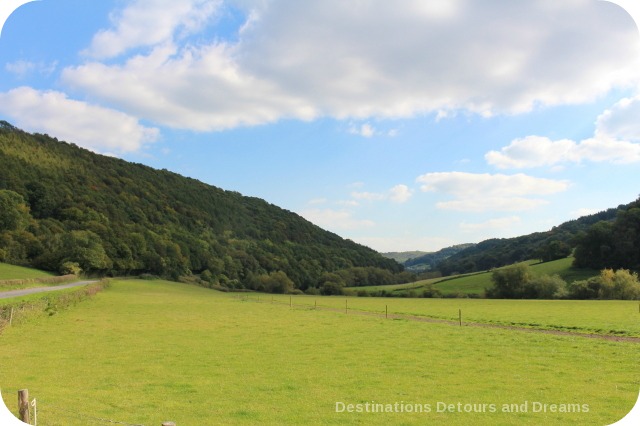
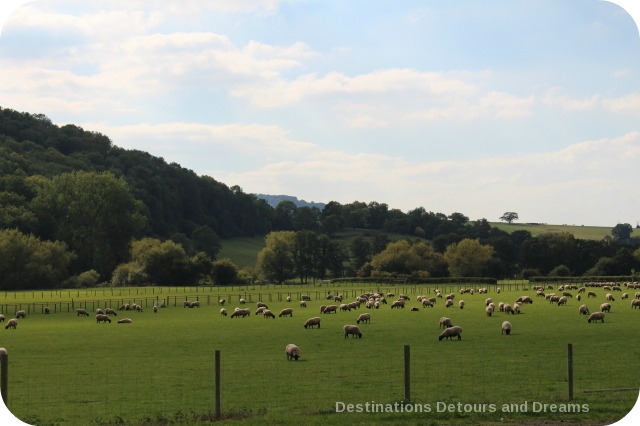
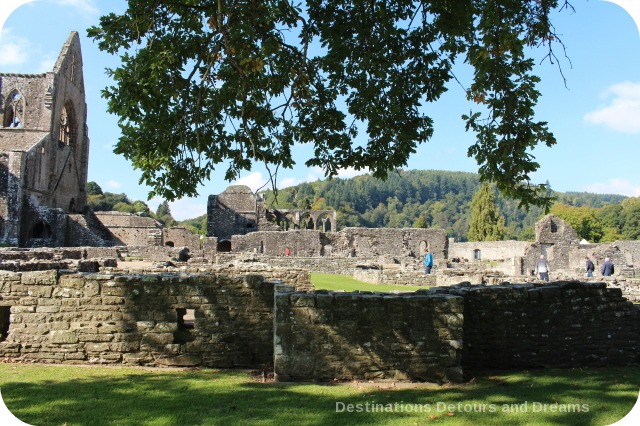
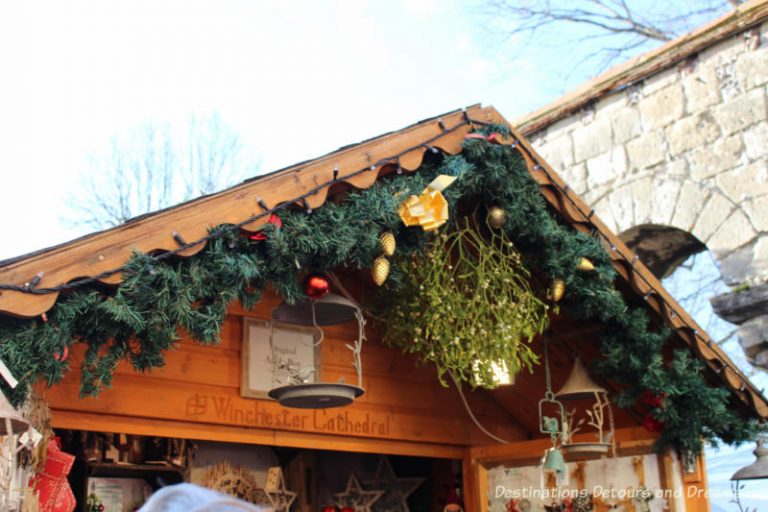
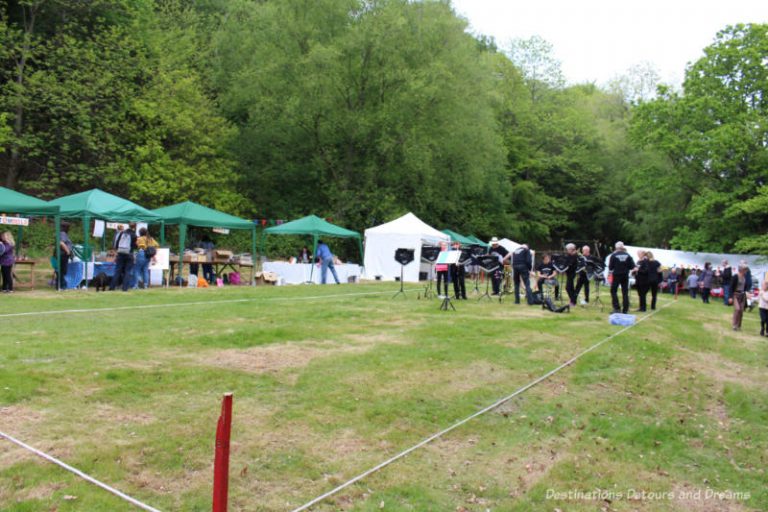
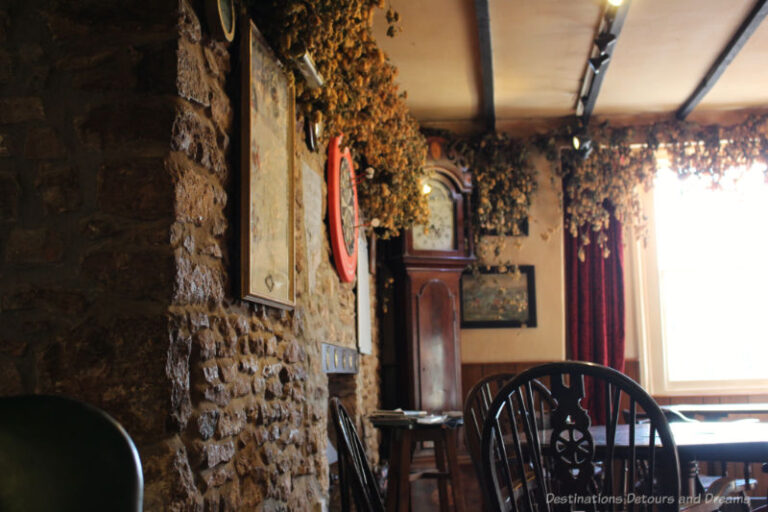
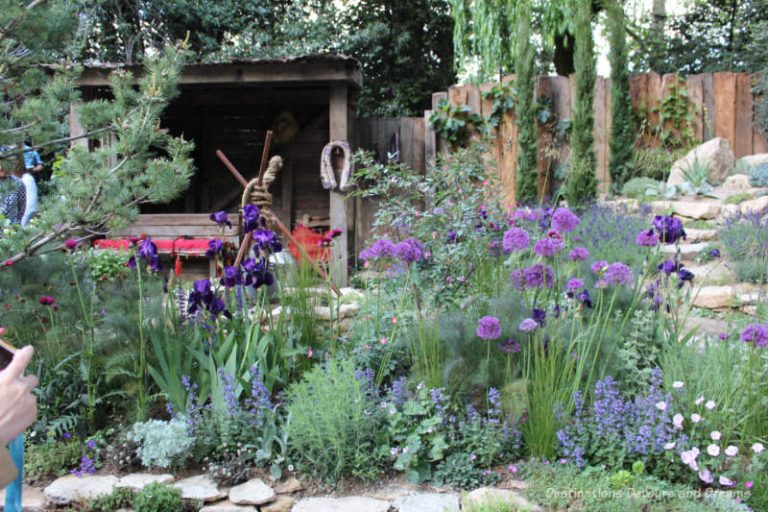
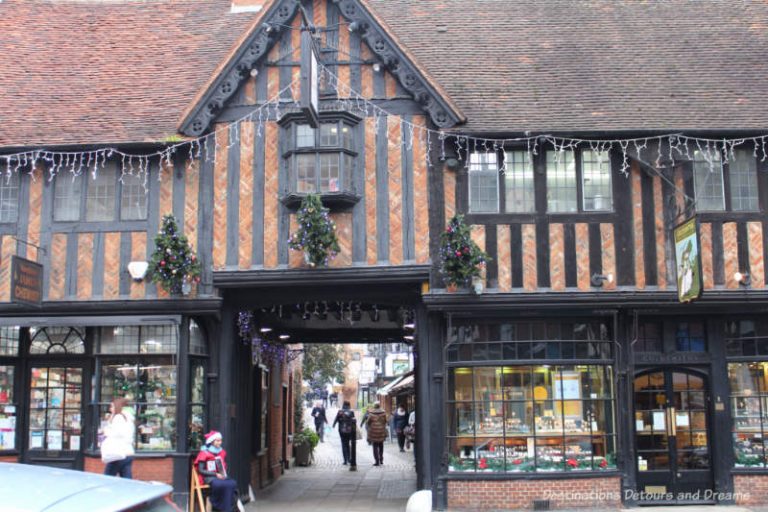
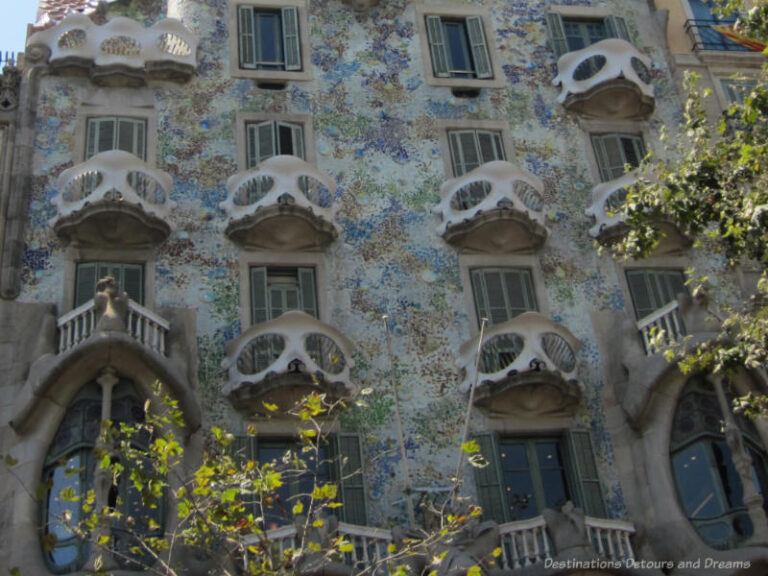
Beautiful, Donna. After my first trip to southern Wales last year, I fell in love with the place. My sister and I are going again next spring, but west of the Wye Valley. Tintern looks like a beautiful place to stroll and ponder life from a long time ago–or today!
Rose Mary, enjoy your trip to Wales. How far west of the Wye Valley are you going? We enjoyed our stay in the Brecon Beacons.
I’ve always wanted to visit South Wales. Wye is now on my list. It looks so peaceful and I love the history.
Bola, Wye Valley is beautiful. Definitely worth including in a south Wales itinerary.
Absolutely gorgeous! I’ve never been to South Wales but I sure would like to visit sometime. The scenery is stunning. Thanks for the pics and the tour:)
Thanks Jacquie.
Wow, this is wonderful, Donna! I think it is interesting that the roof was stripped of the lead. I wonder what they used the lead for? Thanks for sharing these beautiful pictures.
Thanks Sabrina. Good question – I have no idea what the lead was used for.
Donna, Tintern is one of my favourite abby’s, and Cymru is a repeat destination for me. As you’ve demonstrated so well, it’s a very photogenic country. 🙂 Enjoyed revisiting with you in this post.
Thanks Ursula. I can understand why Tintern would be one of your favourite abbeys.
Donna, your photos are gorgeous. I found the history of the Abbey fascinating – what a shame that it was destroyed through greed – but amazing that the walls are still standing, even without the protection of a roof. I liked the way the grass was growing right inside the footings and of course, the whole valley looks wonderful. Thanks for sharing this with us.
Thanks Lenie. The grass growing inside the footings and among the ruins seemed so right, somehow.
Beautiful!
Thanks Jackie.
If I ever get the chance to make it that way, I would love to explore Tintern Abbey. As a King Arthur fan, I would also love to check out Glastonbury Abbey as well.
Jeri, we were very near Glastonbury on this visit, but didn’t get there. Something for our next visit, I guess.
Beautiful images!
Thanks Jim.
I am yet to visit Tintern Abbey – it’s been on my radar for so long now, but not yet got there, despite visiting the area nearby several times. The village of Tintern looks so pretty in your photos and the Wye Valley in general is. I’ve visited Chepstow and Monmoth before and am looking forward to seeing Tintern Abbey next time I’m down that way!
Tilly, this was my first (and so far only) trip into Wales and it was a lovely introduction. Tintern Abbey is impressive and the Wye Valley very scenic. I would have liked to spend more time in it.
I would definitely like to spend more time in that area of the UK…It’s been a while since I was last there!